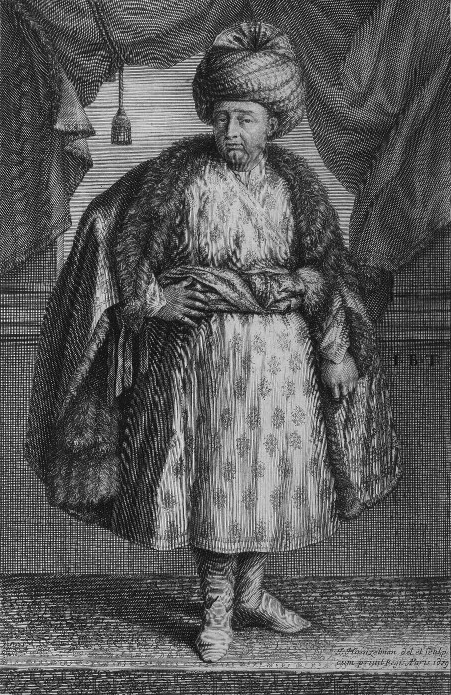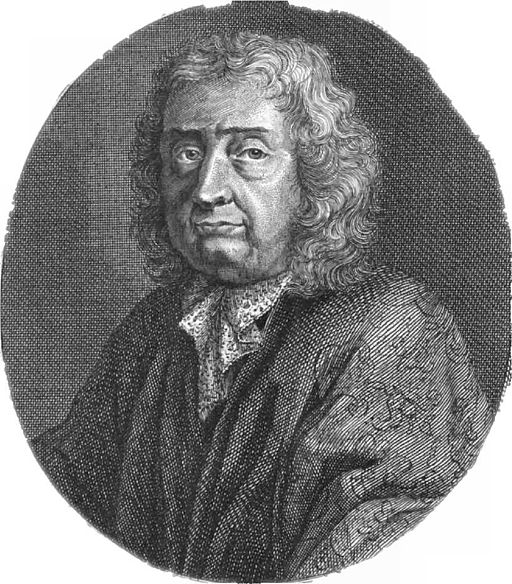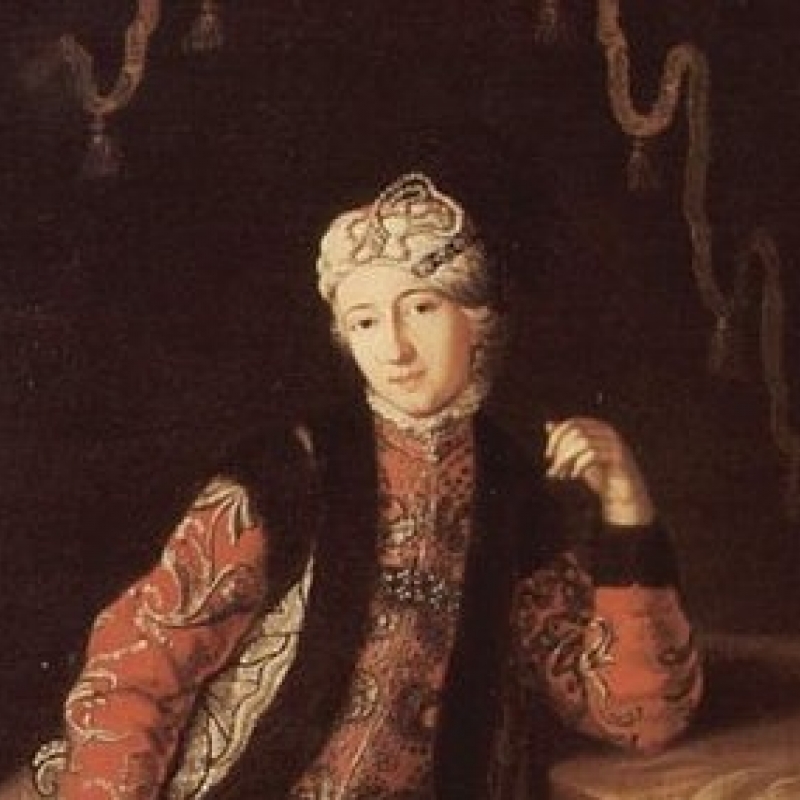Numerous travellers such as Hiuen Tsang and Niccolao Manucci have come to the Indian subcontinent and written extensively about its people and culture. One such traveller was a French jeweller called Jean Baptiste Tavernier, whose fascinating accounts shed light on various aspects of the subcontinent. Prof. B.N. Goswamy discusses Tavernier's accounts of India and how he became an important figure at the Mughal court. (Photo Courtesy: Nicolas de Largillière [Public domain])
This article appeared originally in The Tribune, Chandigarh, and is reproduced here with permission.
It may be more accurate to describe him as a merchant in jewels, rather than as a jeweller, but Jean Baptiste Tavernier knew a great deal about precious stones. He could hold his own even with some of the greatest connoisseurs of his own times, European or Asian; he spent a lifetime buying and selling and evaluating jewels; seven times did he leave the shores of Europe to travel, mostly to the East, now to Constantinople, now to Persia, now to the kingdom of the great Mughals in India. His was a life driven as much by the lure of profit as by the desire to see different lands and people and, of course, his beloved jewels.
Tavernier came to India when Mughal power was at its most magnificent, but also most fragile, in a manner of speaking; the reign of Shahjahan and, later, the troubled times when that Emperor’s sons were battling it out in one of the bloodiest dynastic wars of succession in India’s history.
Born in 1605 and fond of travel, he had started getting to know these and other lands from his early years. In cities like Smyrna and Constantinople, great marts for trading with Persia and India, he had already acquired a taste for the distant East, and it was like someone who knew the territory, thus, that he travelled there for the first time, in 1631.

Jean-Baptiste Tavernier came to India numerous times and visited cities such as Agra, Ahmedabad, Goa and Masulipatam, among others (Courtesy: Joan Hainzelman [Public domain])
Over the next 30 years, he was to come here again and again, and we find him now in Agra, now in Ahmedabad, in Goa one year and Masulipatam the next. But one can trace a clear pattern in his movements: it is to Golconda where the great diamond mines were that he would veer again and again; or to places where the potential buyers of the goods that he brought with him from Europe: Mir Jumla, Zafar Khan, Shaista Khan, even on one occasion the self-denying Aurangzeb himself. Not everything that he saw or sold, Tavernier wrote about in his 'Travels' (which incidentally were a phenomenal success), but there is hardly another account in which we have someone speak about the jewels of India with the same authority as Tavernier does.
Of his purchases in India, mostly in the diamond-region around Golconda, in the territory then called ‘Carnatic’, Tavernier speaks—like the discreet, shrewd businessman that he must have been—very little. But of what he saw, and what he tried to sell, there are vivid accounts. Almost always, there are remarks about the difficulty of gaining direct, unmediated access to men in power, but once he succeeds in meeting them, there are elaborate accounts of objects and transactions. Among the most fascinating is his account of the Imperial jewels that none else than Aurangzeb agreed to show him, as a mark of special favour, after he had sold to the Emperor a remarkable pearl, 'envied by all the potentates of the East'.
'Immediately on my arrival at the court, the two custodians of the King’s jewels accompanied me into the presence of His Majesty; and after I had made him the ordinary salutation, they conducted me into a small apartment... where the King was seated on his throne, and from whence he was able to see us. I found in this apartment Akil Khan, chief of the jewel treasury, who ordered four of the King’s eunuchs to go for the jewels, which were brought in two large wooden trays lacquered with gold leaf, and covered with small cloths made expressly for the purpose—one of red velvet and the other of green brocaded velvet. After these trays were uncovered, and all the pieces had been counted three times over, a list was prepared by three scribes who were present....'

Among the most fascinating is his account of the Imperial jewels that Aurangzeb agreed to show him as a mark of special favour after he had sold a remarkable pearl to the Emperor (Courtesy: User Magnus Manske on en.wikipedia [Public domain])
These preliminary observations about the ceremony, the procedures, over, Tavernier goes into an almost clinical account of the jewels. It is too long to reproduce here, but some of the descriptions are difficult to resist.
'The first piece which Akil Khan placed in my hands was the great diamond (the description matches the diamond which came to be known all over the world as ‘the Great Moghul’), which is a round rose, very high at one side. At the Basal margin it has a small notch and a little flaw inside. The water is beautiful, and it weighs 319.5 ratis, which are equal to 208 of our carats....'
'After I had fully examined this splendid stone, and returned it into the hands of Akil Khan, he showed me another stone, pear-shaped, of good form and fine water, and also three other table diamonds, two clear, and other with little black spots. Each weighed 55 to 60 ratis, and the pear 62.5. Subsequently, he showed me a jewel of 12 diamonds, each stone of 15 to 16 ratis, and all roses....'
'Akil Khan also placed in my hands two other pearls, perfectly round and equal, each of which weighed twenty five and a quarter ratis, ... of a very lively water, and the most beautiful that can be seen. It is true that the prince of Arabia who has taken Muscat from the Portuguese, has a pearl which surpasses in beauty all others in the world; for it is perfectly round, and so white and lively that it looks as though it was transparent, but that weighs only fourteen carats...'
And so on it goes, this account. There are riches here that pass one’s comprehension, and technical descriptions—a diamond of 'good' or 'lively water', for instance—which the likes of us might not be able to make much sense of. But this was the world in which men like Tavernier moved and the Mughals inhabited.
An emperor’s rage
Tavernier punctuates the account of his travels with anecdotes and stories which, in his own description, serve the same purpose as caravanserais which 'the Orientals set up in the desert for the relief of travellers.' One of them relates to the times when Aurangzeb, after he had usurped the throne and thrown his own father, Shahjahan into confinement, asked him for his jewels to be given to him 'for use' at the time of his coronation. 'Shahjahan, at this demand of Aurangzeb, which he regarded as an insult levelled at him in his prison by his son, became so enraged, that for some days he was like a madman, and he even nearly died. In the excess of his annoyance he called frequently for a pestle and mortar, saying that he would pound up all his precious stones and pearls, so that Aurangzeb might never possess them.' It was only the pleadings of his daughter that kept him from carrying this wish out, he adds.
This article has been republished as part of an ongoing series Art N Soul from The Tribune.












